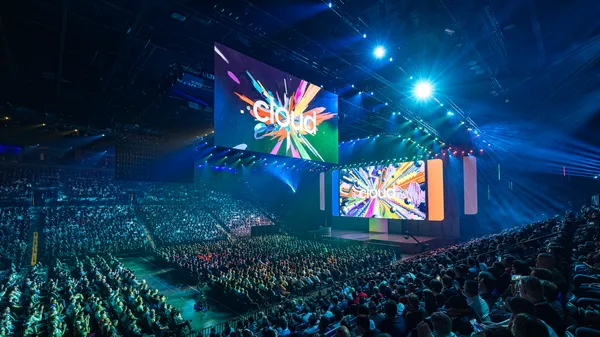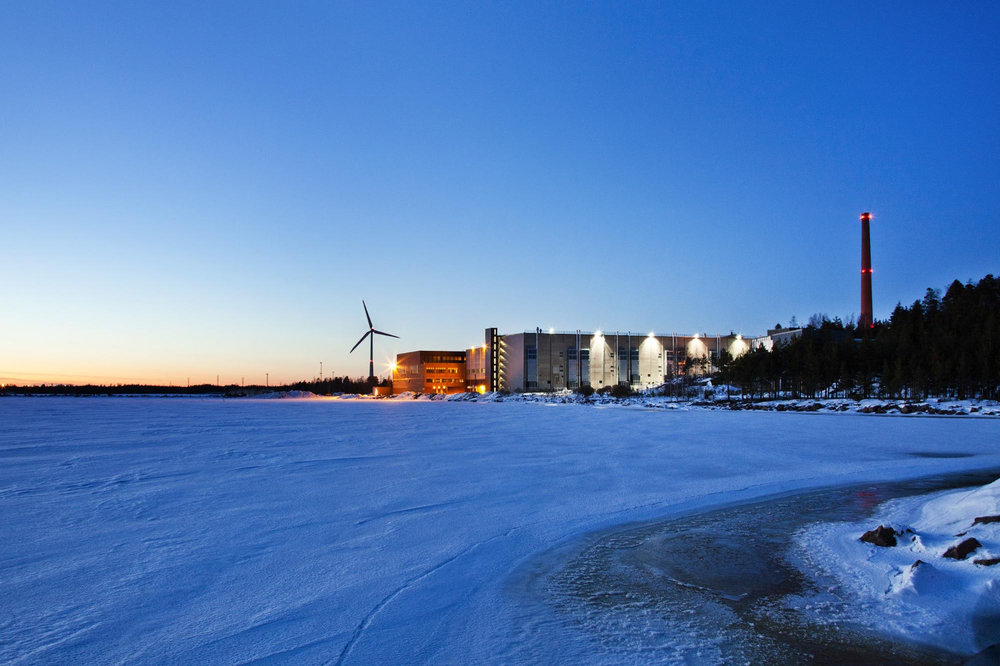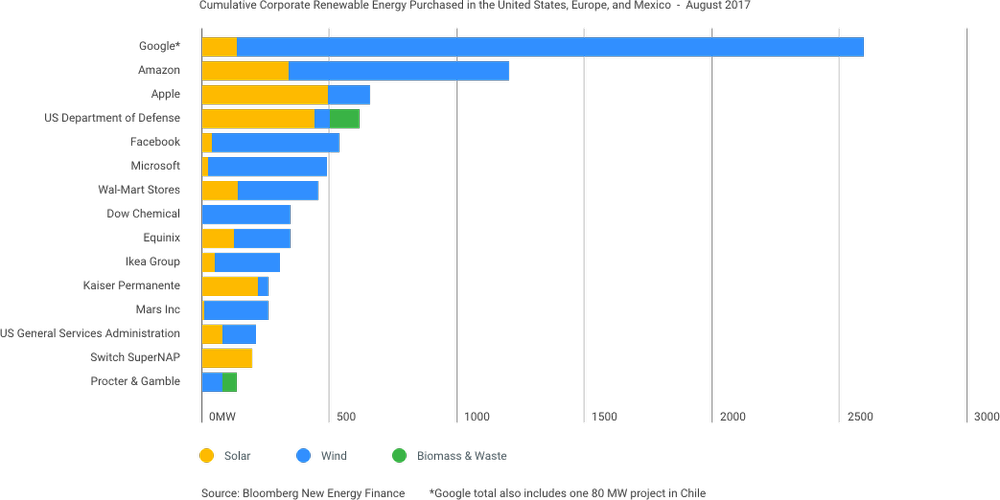 Here’s what we announced at Google Cloud Next 25.
Here’s what we announced at Google Cloud Next 25.
6 highlights from Google Cloud Next 25
 Here’s what we announced at Google Cloud Next 25.
Here’s what we announced at Google Cloud Next 25.
 Here’s what we announced at Google Cloud Next 25.
Here’s what we announced at Google Cloud Next 25.
Global warming brings humankind a host of challenges, from forest fires to heavy storms and desertification. Perhaps none matters more than maintaining and increasing food production. Unseasonal heat and cold snaps, new pest infestations and diseases at unexpected times, or extraordinary drought, wildfire and heavy rain, are just some of the challenges the world's food producers face today and in coming years.
Solutions to the challenges posed by climate change will likely require a two-fold approach. First, we should seek to limit the damage, through more sustainable, less carbon-intensive practices, along with carbon capturing and regenerative agriculture. Second, is to create new ways for farmers to gather and apply information about their crops, to better deal with the challenging new realities of growing food.
Paradoxically, this global challenge calls for better focus on local farming conditions. Farmers worldwide know the particulars of their soil, crops, and rainfall. Farmers can benefit from a better read on how unexpected conditions are affecting their specific farms, so they can take the right steps of prevention and remediation for their farms.
This is why Google Cloud is proud and excited to be working with companies like Agrology, a Virginia-based public benefit company who developed a predictive agriculture system that uses machine learning models, IoT sensors and Artificial Intelligence to deliver farmers timely predictions and insights on everything from temperature, rainfall, and soil conditions, to reducing greenhouse gas emissions from nutrient and fertilizer applications.
Agrology was founded in 2019 with a National Science Foundation SBIR Award, and has gone on to service a number of specialty farms across the country from California to Virginia. The present focus is in wine grape growing and specialty crops, where local soil and climate conditions are particularly important and are under extreme threat. Over time, Agrology will roll out their custom data-driven platform and localized approach to many more farms.
"Early on, we met an apple grower who told us that a weather report from 75 miles away wasn't helping him anymore with figuring out how to apply pesticides, there was too much variation," says Adam Koeppel, Agrology's chief executive. "No farmer wants to overspray pesticides. We started thinking about how holistic agriculture is, and how site-specific it should be."
Agrology developed a custom platform with agricultural sensors which continuously gather a range of data above and below ground. This data is combined with other information, including highly local weather forecasts and macro information like baseline satellite data Agrology then makes sense of all the influences and interactions with TensorFlow, our Machine Learning platform. Google Earth helps the team figure out where to lay out their hardware and wireless gateways so that the team has the necessary tools to deliver data from remote locations to the cloud. “That's a big deal”, says Tyler Locke, Agrology's Chief Technology Officer. "Rural agriculture areas tend to be underserved in technology and infrastructure most of the time," he says. "Farmers want technology to help solve their climate change challenges, but they’ve had a hard time getting it."
We're also pleased to play a role in helping Agrology develop its first data models. Kevin Kelly, Agrology's head of Engineering and Machine Learning, taught himself on Google Colab, a dynamic tool for learning and building and sharing Machine Learning solutions. "Like most engineers, I'm a hands-on learner," Kelly says. "With Colab I was able to step through and execute every line of code, change it, and run it again to see how it affected the output."
Using TensorFlow, Kelly adds, was likewise an easy choice, since "studying model architectures and reading blogs, I found that AI researchers, applications engineers and even hobbyists interested in problems like ours – lots of quality data, lots of interactions among seemingly disparate data sets – overwhelmingly used Tensorflow and Keras to develop their models."
Agrology's cutting-edge approach to agriculture is already showing benefits to its clients, and the team is confident its approach and learnings can scale to an even bigger impact.
"We believe we can help maintain and improve yields, but even more," says Adam. "We are finding ways to help farmers with regenerative agriculture, understanding their ability to enhance soil carbon sequestration with the right crops, better water use, or fertilizer applications that avoid releasing excessive greenhouse gasses. The rate at which the climate is changing is driving growers to alter how they farm and do business. There simply aren’t enough farmers and agronomists, and technology can help growers thrive in spite of the growing challenges.”
Operating Google in an environmentally sustainable way has been a core value from day one. Each year we release our environmental report to share updates on our progress towards a more sustainable future. This year’s report marks our 10th year of carbon neutrality, and we’re excited to share that, in 2017, we’ll reach our goal of 100 percent renewable energy for all of our operations. This includes our data centers, which support our millions of customers on Google Cloud.
As more and more companies transform their businesses digitally, or build new ones, renewable energy is increasingly critical. As businesses, we affect the environment in ways often not clearly visible. Continued and accelerated digital transformation will generate a large digital exhaust. Some projections have data centers consuming as much as 13 percent of the world’s electricity by 2030. If that electricity is not sourced responsibly, it has the potential to significantly and negatively impact the environment.

We believe that environmental impact should be an important consideration—alongside factors such as price, security, openness and reliability—when it comes to data storage, processing and development. Fortunately, more and more companies are making commitments toward sustainability.
Here are a few ways businesses can create real impact:
By moving from a self-managed data center or colocation facility to Google Cloud Platform (GCP), the emissions directly associated with your company’s compute and data storage will be reduced to zero.
Businesses that switch to cloud-based productivity tools like G Suite have reported reductions in IT energy use and carbon emissions by 65 percent to 85 percent.
Machine learning workloads can require complex computations that are energy intensive. Google Cloud TPUs are designed with energy efficiency in mind, specifically to accelerate deep learning workloads at higher teraflops per watt compared to general purpose processors.
Energy efficient cold storage options can help you retain data long term without sacrificing speed to access.
Google takes our commitment to sustainability very seriously. Many data centers use almost as much non-computing or "overhead" energy (like cooling and power conversion) as they do to power their servers. At Google, we've reduced this overhead to only 12 percent (a.k.a. a PUE of 1.12). We also use our own machine learning in our data centers, which enables the analysis of massive amounts of operational data center data to create actionable recommendations, automated controls and 15 percent further reduction in energy overhead.
For each unit of electricity we use as a company, we’ve committed to purchasing an equivalent amount (or more) of renewable energy. This includes the energy we use to power all our Google Cloud users. We also have a high bar for the energy we purchase: We strive to buy renewable energy from projects that are new to the grid, enabling those developers to finance and add even more green power. In fact, Google is the largest corporate purchaser of renewable energy in the world.

We’re very proud that Greenpeace gave us an A rating in the 2016 Clicking Clean report, its annual benchmark of the IT sector’s energy performance. But we know there’s still more work to be done. We believe that building on a sustainable cloud is not just good for the environment, it’s good for business, too. We built Google on that belief—and we invite you to build your business on it as well.
Operating Google in an environmentally sustainable way has been a core value from day one. Each year we release our environmental report to share updates on our progress towards a more sustainable future. This year’s report marks our 10th year of carbon neutrality, and we’re excited to share that, in 2017, we’ll reach our goal of 100 percent renewable energy for all of our operations. This includes our data centers, which support our millions of customers on Google Cloud.
As more and more companies transform their businesses digitally, or build new ones, renewable energy is increasingly critical. As businesses, we affect the environment in ways often not clearly visible. Continued and accelerated digital transformation will generate a large digital exhaust. Some projections have data centers consuming as much as 13 percent of the world’s electricity by 2030. If that electricity is not sourced responsibly, it has the potential to significantly and negatively impact the environment.

We believe that environmental impact should be an important consideration—alongside factors such as price, security, openness and reliability—when it comes to data storage, processing and development. Fortunately, more and more companies are making commitments toward sustainability.
Here are a few ways businesses can create real impact:
By moving from a self-managed data center or colocation facility to Google Cloud Platform (GCP), the emissions directly associated with your company’s compute and data storage will be reduced to zero.
Businesses that switch to cloud-based productivity tools like G Suite have reported reductions in IT energy use and carbon emissions by 65 percent to 85 percent.
Machine learning workloads can require complex computations that are energy intensive. Google Cloud TPUs are designed with energy efficiency in mind, specifically to accelerate deep learning workloads at higher teraflops per watt compared to general purpose processors.
Energy efficient cold storage options can help you retain data long term without sacrificing speed to access.
Google takes our commitment to sustainability very seriously. Many data centers use almost as much non-computing or "overhead" energy (like cooling and power conversion) as they do to power their servers. At Google, we've reduced this overhead to only 12 percent (a.k.a. a PUE of 1.12). We also use our own machine learning in our data centers, which enables the analysis of massive amounts of operational data center data to create actionable recommendations, automated controls and 15 percent further reduction in energy overhead.
For each unit of electricity we use as a company, we’ve committed to purchasing an equivalent amount (or more) of renewable energy. This includes the energy we use to power all our Google Cloud users. We also have a high bar for the energy we purchase: We strive to buy renewable energy from projects that are new to the grid, enabling those developers to finance and add even more green power. In fact, Google is the largest corporate purchaser of renewable energy in the world.

We’re very proud that Greenpeace gave us an A rating in the 2016 Clicking Clean report, its annual benchmark of the IT sector’s energy performance. But we know there’s still more work to be done. We believe that building on a sustainable cloud is not just good for the environment, it’s good for business, too. We built Google on that belief—and we invite you to build your business on it as well.